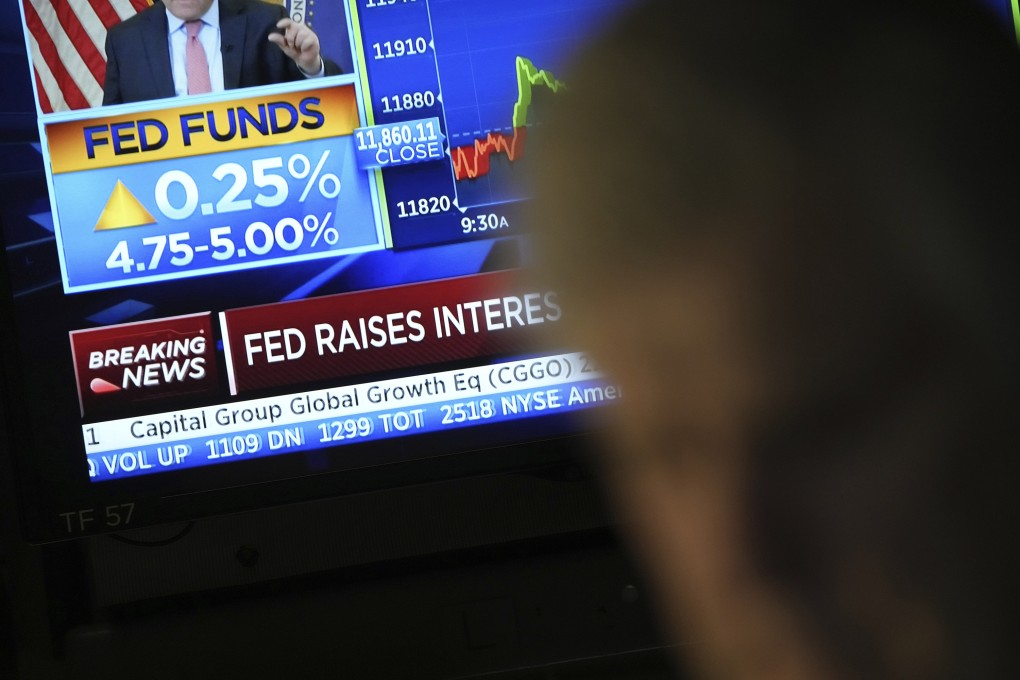Advertisement
Macroscope | As US banking stress rises, here’s what investors should be looking at
- The Fed’s mopping up of market liquidity has put stress on banks. While the tightening is set to end, market concerns remain
- Investors can gauge temperatures by tracking bank deposit shifts and indicators such as the FRA-OIS spread and US Conference Board’s leading credit index
Reading Time:3 minutes
Why you can trust SCMP
2

Over the past year, stubbornly high inflation has forced the US Federal Reserve into arguably its most acute monetary tightening cycle yet. Since March last year, the US central bank has increased its interest rates by an aggressive 4.75 percentage points – compared to the average rate tightening cycle of 3.02 percentage points over 21 months.
Advertisement
This drastic pickup in interest rates has led to a significant tightening in lending standards and a sharp downward reassessment of asset prices. At the end of February, the US M2 broad money supply – a measure of money circulating in the economy – shrunk by 2.35 per cent year on year, its largest decline since data was published in the 1960s. As a result, fragilities have started to appear in the economy.
As liquidity has become scarce, turbulence has emerged in the US banking sector. So far, the Federal Reserve, US Treasury and Federal Deposit Insurance Corporation (FDIC) have managed to ease concerns by providing new liquidity provisions.
With the injection of funds provided by the newly established Bank Term Funding Programme, banks’ borrowings from the Federal Reserve’s discount window – discounted loans to tide over short-term needs – have also fallen. This suggests that banks are now better able to manage their customers’ drawing down of deposits without relying too much on the central bank. Deposit drawdowns have also been localised, manageable and limited to a few small regional US banks.
That said, there are increasing concerns that further pressure could be felt in other areas of the banking sector if the Fed raises interest rates further to bring down inflation. Markets see a high likelihood of a 25 basis points increase in May and a drop after that.
Advertisement
But if inflation stays high, the labour market stays tight and economic data point to the need, the data-reliant Fed may be forced to tighten monetary policy further than expected. This may cause credit conditions to tighten even more.

Advertisement
